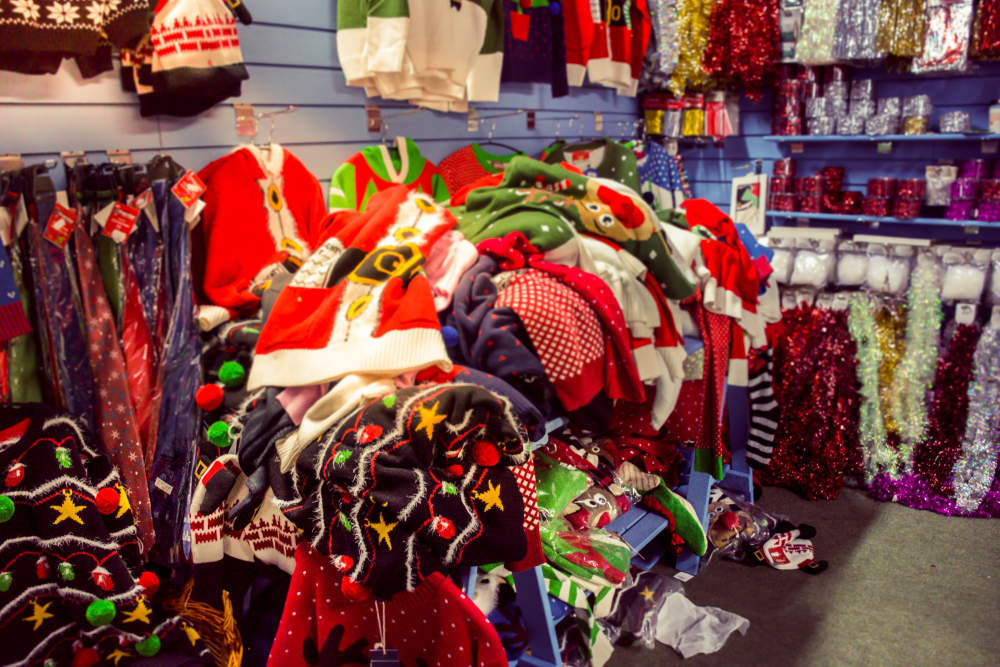
With the rising popularity of Christmas jumpers stores are under pressure to produce hordes of the festive clothing for office parties, pub crawls, and family gatherings.
But the fast fashion and mass production behind the jolly jumpers is putting a strain on resources and the environment.
How was your Christmas jumper made and where it will end up when the holidays are over?
Read more: You can spend over $1,000 on a tacky Christmas jumper you’ll probably wear once
Though originally a symbol of all that was tacky, the garment’s popularity has been steadily increasing over the years.
There were almost 9.3m internet searches for Christmas jumpers between September and December in 2015, a significant increase from the 6m searches from the whole of 2014, according to search engine optimisation company Foundit.
How well do you really know your competitors?
Access the most comprehensive Company Profiles on the market, powered by GlobalData. Save hours of research. Gain competitive edge.

Thank you!
Your download email will arrive shortly
Not ready to buy yet? Download a free sample
We are confident about the unique quality of our Company Profiles. However, we want you to make the most beneficial decision for your business, so we offer a free sample that you can download by submitting the below form
By GlobalDataAlthough organisations such as Save the Children encourage people to purchase and wear Christmas jumpers to support those in need, the general trend sees people buying an item that they often will only wear once.
Though a cheery sight around the Christmas season, most of the time it will end up on a landfill site after only a few wears.
While recycling food waste has gained popularity in recent years, the same has not yet been achieved for unwanted clothing.
In 2016 over 235m items of clothing ended up in landfill, while in the US 10m tons of clothes are thrown out every year, 95 percent of which could be reused or recycled.
The introduction of numerous fashion seasons has led to the growth of fast fashion, with the original two (spring/summer and autumn/winter) going up to as many as 100 micro-seasons per year.
Such a rapid turnover means clothes are being increasingly seen as disposable.
The average person is now purchasing 60 percent more items of clothing compared to 2000, according to the World Resources Institute, but each garment is kept half as long.
Demand for Christmas jumpers that will rarely be worn outside of a small time frame only adds to this throwaway culture.
The Christmas jumper is of course just a small example of the negative effect the fashion industry has on the environment. The fashion business is responsible for 85 percent of all textiles that make their way to landfill sites – around 21bn tonnes each year according to the Environmental Protection Agency.
Unfortunately with Christmas’ commercial emphasis and the numerous occasions calling for people to don an embarrassing tacky jumper, the problem is only exacerbated by the holiday season.
Christmas jumpers owned and bought in 2016 alone had an environmental impact “equivalent to more than 500,000 bathtubs of water and enough carbon dioxide to fill 179 balloons for every person in the UK, the Huffington Post reported.
Changing consumer habits have also led some to raise concerns over how companies are producing clothing at such bulk.
Sweatshop labour is a widely recognised issue, and with stores filling up with novelty jumpers there is the inevitable fear that labour standards are being bypassed to fulfil public demand.
For some this fear also extends to animals. To avoid the cheaply made and quickly disposable jumpers there is the option of buying a merino wool or cashmere version that will last for at least a few years.
However, shearing animals for wool or hair can harm them and increased demand for their wool leads to factories and farms in which they can be mistreated or abused. Shearers are paid by volume rather than time, encouraging fast work that leads to injuries.
Increased demand for cashmere, once a luxury item and now more readily available for lower costs, has seen a rise in the mistreatment of goats used for its production, as well as ecological damage caused by their inflating numbers — such as the erosion of the Alashan plateau between the Tibetan plateau and Mongolia’s Gobi Desert.
It was a site originally home to 2.4m Gobi goats in the 90s, and is now accommodating 26m, destroying the grassland at a rate of 400 square miles per year and causing millions of rural Chinese to migrate from their villages.
Christmas jumper ideas to minimise environmental impact
-
Buy from a charity shop — or do a jumper swap with your friends and family
-
Donate your unwanted jumpers rather than throwing them away
-
Check the source of the materials and invest in a jumper that you can keep for at least a few years







